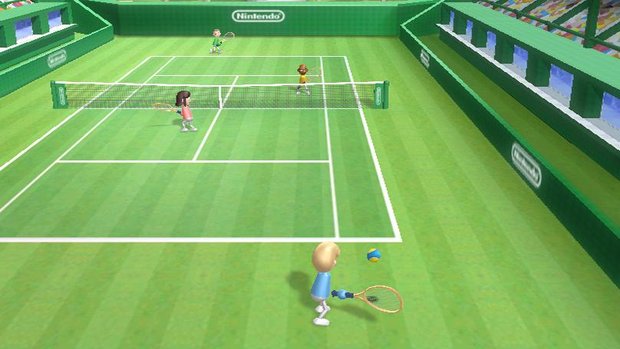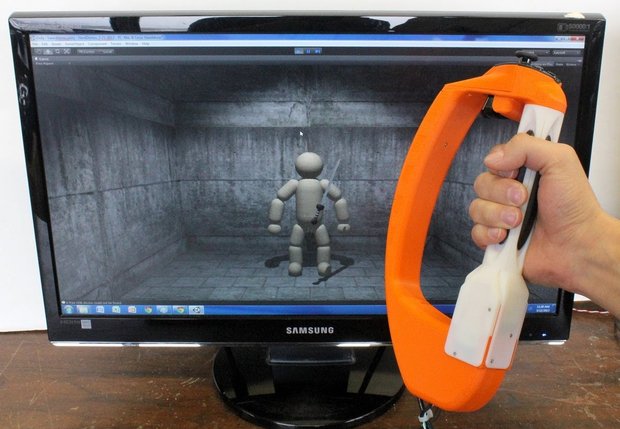What's next? - The coolest motion controller tech you've ever seen
Naysayers will tell you that motion gaming is a gimmick; it doesn't appeal to the hardcore crowd, and no one can make real games that support the tech. But don't forget: More than 100 million people were perfectly okay spending a couple hundred bucks on a Nintendo Wii so they didn't have to drive anywhere to go bowling. At least one person accidentally died for the chance to own the then-new console back when it launched in late 2006. So there must be some value in waving a piece of plastic in front of a television to make stuff happen on-screen.
For many, that value is in the accessibility that comes with motion controls. Think about what happens when you hand a gamepad to friends or family who don't play games on the reg--watching them try to figure out how to use two analog sticks is like watching a person with one arm trying to pat his head and rub his belly at the same time. For those of us who grew up gaming, controlling a character's movement independently from a free-moving camera is easy. But it's nigh impossible for those who are just starting to get into gaming. That's exactly what happened to Will Provancher, a professor at the University of Utah.
"Some of the difficulties I had when I first started playing [games]--because I hadn't really played since I was doing arcade stuff in college and when I was younger, was learning the bi-manual thumbsticks," Provancher says. "It's a very difficult thing."

So for him, motion controlled games made sense. People can play a game merely by imitating real-life motions they're already familiar with. But as many Wii owners will likely admit, there's something… off about the whole experience once the initial excitement of using a motion controller for the first time wanes. You can imitate your bowling approach or tennis swing perfectly, but without consistent haptic feedback (that is, feedback that taps into your sense of touch), you're just getting all of the motion with none of the associated resistance.
Provancher, whose PhD research just so happens to be in the field of haptics, began to think about the ways in which new feedback technology could be layered over already-existing motion controllers--and thus his company Tactical Haptics was born. The first of its products: Reactive Grip, a series of cylindrical, sliding bars that manipulate the skin on your hand to imitate weight and torque.
"We've been working on this line of research now for about five years," Provancher says. "The major jump is really in making the motion of the device represent physical interaction. Say you have a baseball bat in your hand. If you were to go and swing that through some range of motion, what you're experiencing is two things: One is the force that your muscles are exerting, and the second is the forces experienced through the skin that you're grasping the bat with.
"While we're not going and applying any external forces on you, what we are doing is mimicking those reaction forces in your hand," he says. "Those reaction forces are pretty simple. As you're swinging around and you stop, you're applying a torque on the baseball bat that stretches the skin on one side of your hand in one direction and stretches the skin on the other side of your hand in the opposite direction."
Weekly digests, tales from the communities you love, and more
In other words, imagine playing the tennis game in Wii Sports. Everytime you move the controller--the tennis racket--the Reactive Grip bars move in such a way that they simulate the weight and movement of the racket; and when you hit the virtual ball, a quick pulse of those bars imitates the torque produced by the collision, the same you'd feel if you were actually playing a real game of tennis. This is a far more realistic sensation than, say, the simple vibrations built into traditional rumble motors.

Of course, Reactive Grip isn't some aftermarket product you can go out and buy, then slap onto existing motion controllers. It's still in the prototyping phase, and Provancher hopes to take it to Kickstarter sometime in the fall. Even if production is funded, he'll have to work out deals with the likes of Sony and Nintendo to implement a version of the product that'll work with their motion controllers.
He has his reservations, of course--there are plenty of the aforementioned naysayers who will decry anything related to motion gaming. But with any luck, there'll be enough people interested in the advancement of motion technology to make Reactive Grip a reality.
"Haptics is one of these things that you have to feel to believe," Provancher says. "You see people just light up when they experience this for the first time--maybe because they're just expecting vibration feedback again, and they're pleasantly surprised that it's something different."
So what do you think? After watching the video above, is this something that would make you more interested in motion gaming? Or do you find it impossible to care about the concept at all? Let us know in the comments below, and check out Tactical Haptics for more info on Reactive Grip.
What's Next? is a bi-weekly column exploring the future of gaming tech.
Ryan was once the Executive Editor of GamesRadar, before moving into the world of games development. He worked as a Brand Manager at EA, and then at Bethesda Softworks, before moving to 2K. He briefly went back to EA and is now the Director of Global Marketing Strategy at 2K.



